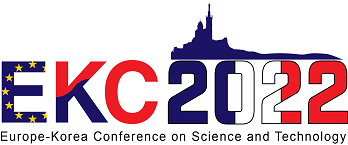
|
| Analyzing urban spatial characteristics for sustainable and resilient cities |
| PROF. KIM, Youngchul |
| KAIST |
| Young (Youngchul) KIM, Ph.D. is an associate professor of urban design at KAIST and an urban designer, licensed architect, researcher and educator. He teaches history, theory and design in architecture and urbanism. His current research interests include planning and design strategies in the era of climate change and urban analytics for capturing urban invisible characteristics. His urban research and design practice both explore roles of built environments in human being's daily challenges.
Prof. Youngchul Kim, PhD, Architect
Associate Professor of Urban Design, KAIST Department of Civil and Environmental Engineering
Director, KAIST Smart City Research Center
Director, KAIST Urban Design Lab
Education:
University of Michigan, PhD
Seoul National University, MS
Seoul National University, BS
Recent Journal Publications:
Choi J, No W, Park M, Kim Y (2022) Inferring land use from spatiotemporal taxi ride data, Applied Geography, 142: 102688.
Lee S, Jang KM, Kang N, Kim J, Oh M, Kim Y (2022) Redesigning urban elements and structures considering autonomous vehicles: Preparing design strategies for wide implementation in cities, Cities, 123: 103595.
Kim Y, Kim Y (2022) Explainable heat-related mortality with random forest and SHapley Additive exPlanations (SHAP) models, Sustainable Cities and Society, 79: 103677.
|
|
|





